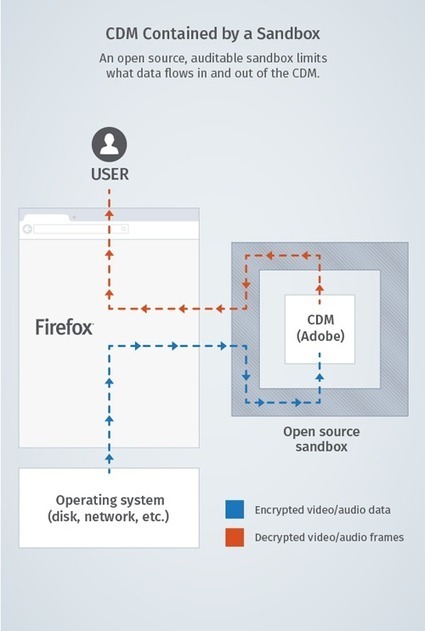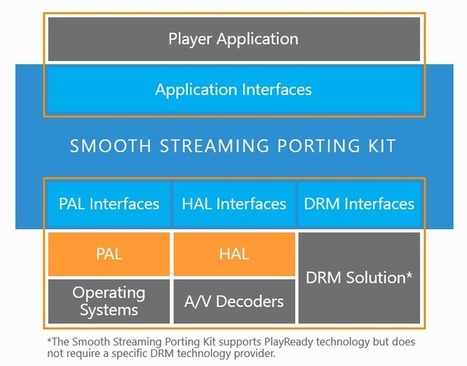 Your new post is loading...
 Your new post is loading...
Four years ago, we wrote about YouTube’s early support for the HTML5 <video> tag and how it performed compared to Flash. At the time, there were limitations that held it back from becoming our preferred platform for video delivery. Most critically, HTML5 lacked support for Adaptive Bitrate (ABR) that lets us show you more videos with less buffering.
Over the last four years, we’ve worked with browser vendors and the broader community to close those gaps, and now, YouTube uses HTML5 <video> by default in Chrome, IE 11, Safari 8 and in beta versions of Firefox.
Google is phasing out support for the Netscape Plugin API in the coming months, so Smooth Streaming providers need to come up with a strategy soon.
This year the EBU BroadThinking Conference was sounding like a holistic swirl, a milestone in the trend of technology to define sets that are greater than the sum of their parts, through creative evolution. « Where Broadcast Meets BroadBand », you get some interesting fusion effect occurring and diluting the traditional boundaries of the screens, with the handheld devices being part of the big screen experience or extending it rather than trying to scalp it, in an environment where all the devices converge towards a restricted set of standards rather than tracing their own line.
While we by default think that standardization kills creativity, events like BroadThinking show that it’s the opposite: if we gather energies to solve common problems together, we can both come up with a more evolved solution and concentrate on what’s important past the pixel grid: the user experience, so consistent across screens that you forget there’s more than one screen involved.
Even though users will be able to let NPAPI plug-ins run by default in January, we encourage developers to migrate of off NPAPI as soon as possible. Support for NPAPI will be completely removed from Chrome in a future release, probably by the end of 2014.
The ability to adapt media streaming to an individual consumer is critical in delivering high-quality content to a large audience. In the past this capability has been provided by technologies such as Silverlight’s smooth streaming and Quicktime’s HTTP live streaming. The Media Source Extensions to the HTML media element provide the capability to adapt a stream to an individual consumer on the modern web. Html5rocks has put together a great example of how to use the Media Source Extensions to implement some of these common use cases.
With the recent announcements from Apple/Netflix and Mozilla, all modern desktop browsers will soon support the proposed HTML Encrypted Media Extensions (EME) standard. EME provides a standardized approach for playing encrypted content in HTML5. One application of encrypted video is the enforcement of Digital Rights Management (DRM) on paid video content. Many content owners (film studios, sports leagues, etc.) mandate using DRM to distribute their content online.
What does all of this alphabet soup mean for users? In short, the EME standard enables publishers to deliver premium video to browsers without the need for plugins. To date, doing DRM in the browser requires the Adobe Flash, Microsoft Silverlight or Google Widevine plugins. These plugins use non-interoperable file formats, protocols and DRM key systems, creating fragmentation. EME solves (most of) these issues, enabling premium video in HTML5 using a single file format and streaming protocol.
Encrypted Media Extensions provides an API that enables web applications to interact with content protection systems. Learn how to allow playback of encrypted audio and video.
Avec le passage au full HD et bientôt à la 4K de a diffusion OTT, le modèle de distribution unicast montre ses limites. La course à l’armement des CDNs dans le déploiement de baies de serveurs et la multiplication des points de peering n’est pas scalable à l’infini, et pourtant le traffic vidéo ne cesse d’augmenter de manière exponentielle, y compris – et surtout – sur les terminaux mobiles. La recherche de modèles de distribution OTT complémentaires avec le multicast est donc une priorité pour continuer d’assurer la qualité de l’expérience utilisateur et optimiser les coûts de diffusion. Les regards se tournent de plus en plus vers le transport multicast qui a fait le succès de l’IPTV, ainsi que le Peer-to-Peer qui, malgré sa réputation sulfureuse, a déjà fait ses preuves pour la diffusion de chaines live OTT à très grande échelle. Pour tout savoir du multicast et du P2P, et apprendre des retours d’expérience et de recherche des membres de la Squad qui travaillent sur ces systèmes hybrides, OVFSquad organisait le 23 janvier 2014 une soirée spéciale de présentations (aka « Conférensquad ») dont voici le compte-rendu et les présentations.
One question I often receive is regarding HTML5 video on Android. It often causes confusion, since the term “HTML5 video” doesn’t define the supported feature set, especially when it comes to advanced streaming features, such as streaming protocols, closed captioning or content protection. The short summary is that Android does not match the iOS HTML5 streaming capabilities, which leads to unpleasant surprises when opening an iOS optimized video streaming site in the Android browser. But why is this the case when Android is leading with an 80% market share? To better understand the challenges today, let’s look at the history of browser based video on Android.
Display a chromecast Button on Control Bar video.js players.
This plugin was tested on video.js 4.1.0 4.2.0 and 4.2.1.
Presentation discusses various aspects of IPTV delivery and relationship with H.265 (HEVC), HTML5 and other latest technologies.
Presented during IMTC 20th Anniversary Forum in Porto, Portugal

|
Suggested by
SmilingAnny
|
Recently Flash players were extremely popular, but now they are going with the times. More often users choose HTML5 solutions. Choose your very best HTML5 video player!
my presentation from cf.objective 2013 on building a DASH-264 player in HTML/JavaScript
Over the last year, we've been collaborating with other industry leaders on three W3C initiatives which are positioned to solve this problem of playing premium video content directly in the browser without the need for browser plugins such as Silverlight. We call these, collectively, the "HTML5 Premium Video Extensions"
|
HEVC might be getting all the attention, but Google's VP9 appears to match H.265 in quality and might play a bigger role in the transition from Flash to HTML5
Probably the hottest thing the W3C is working on right now is their Encrypted Media Extension Working Draft. The EME draft is widely talked about as "the DRM standard for HTML5", but this is not truly what it's content covers. I'll look at what it is, why it's not a great idea, and some implications of its approval, were it to be approved. It's possible to tell what's actually covered by the W3C's draft by carefully examining its title; the second word - "media" - is the key. Your average layman might assume that this refers to media in the general sense (and its oh-so-natural wont for encryption); whereas in fact, it refers very specifically to HTML5's media elements. You might know them as <audio> and <video>. The standard specifies some funky extensions to their DOM/Javascript API, based around cryptographic key management. There is almost nothing here about interesting DRM technology, but there are some warnings that it will introduce yet another way for advertisers to track you. Huzzah.
Adobe Systems has made some upgrades to its Primetime Digital Rights Management platform that the software vendor said will bring its content protection service into the world of browser-based video.
Adobe announced Primetime DRM is now available on apps without a Flash Player plugin, as well as via HTML5 on major Web browsers. The changes are significant as they represent Adobe's shift away from its Flash-player approach in favor of using emerging HTML5 extensions that support video embedded directly into Web pages.
We’re excited to announce an open source video player framework to make online video and video monetization with the IMA SDK easier than ever. The Google Media Framework (GMF) is available for iOS and Android, and we have a Video.js plugin for web based video players.
MF Features - Ready to use Video player for your apps and websites
- Demo apps include production ready integrations with the IMA ads SDK
- GMF is free and open source, so can be customized to meet your specific needs (Send us a pull request!)
- Easily customize the UI color and add or remove buttons
- Support for iOS 7+ and Android 4.1+
Turning a basic HTML5 video player into one with enhanced playback features is surprisingly simple. Here's the code to add chapter markers, captions, and more.
With most competing browsers and the content industry embracing the W3C EME specification, Mozilla has little choice but to implement EME as well so our users can continue to access all content they want to enjoy. Read on for some background on how we got here, and details of our implementation.
The W3C HTML working group is developing media extension specifications for HTML5 to enable the delivery of commercial video to consumers over the Web. One of these is the Encrypted Media Extensions (EME) specification. The current specification describes an open interface which may be used to implement an EME-compliant Content Decryption Module (CDM) within a User-agent, providing access to a platform DRM component which supports the defined Content Decryption Module interface (CDMi).
This blog gives an overview of what kind of client support Microsoft offers as part of Windows Azure media Services. On one side, you could create, manage, package and deliver media asset through Windows Azure media services. Many popular streaming formats are supported, such as Smooth Streaming, Http Llive Streaming and MPEG-dash. On the other hand, we provide various SDKs and frameworks for you to consume media asset by building rich media applications rapidly on many platforms, such as PC, XBox, mobile and etc.
With free-to-air broadcasters increasingly looking to hybrid solutions, combining broadcast with IP-based advanced interactive services to stay relevant, Europe’s HbbTV standard is evolving to enable a wider range of applications. Stuart Thomson reports.
A major advantage of HTTP Live Streaming, and it is still unbeaten by any other standard, is that you can use any technology to compose multimedia content. You don’t need expensive media servers to handle media streams. You can easily delegate media composition to some simple PHP / Python / Ruby / Node.js modules. As a long-time Flash lover I was somewhat prejudiced against the Apple’s video delivery standard. But as a developer, every day I use it to solve tasks which have been almost unattainable with the previous stack (or required expensive software). Adobe HDS playlists have been really hard to deal with. Just think of binary data in f4m playlists. They require much more time to develop & debug the solution. MPEG DASH is also far from being intuitive. In this post, we are going to discuss how to make an alternative audio track for your video. Although HTTP Live Streaming can streamline this task, yet there are some limitations, so you need to make certain hacks on the client side. In our Togetherproject, we had to implement alternate sound tracks for user videos. Luckily, we use HTTP Live Streaming throughout the system.
Earlier this month the Web standards body, W3C, announced the first draft of the Encrypted Media Extensions (EME) specification, which will allow content providers to add content protection to HTML5 videos for the first time. While EME will not handle the encryption process or Digital Rights Management (DRM) system, it will provide a standard for third-party plug-ins to support DRM in the web browser. The news elicited a mixed response from web platform commentators but there is no doubting its significance for the digital TV community. Right now, the appetite for HTML5 video is strong, as a platform for a consistent, cross-device viewing experience. Developed with the new breed of mobile and OTT-capable devices in mind, HTML5 makes it possible, in theory, to standardise playback on any device, via the browser, and eliminates the need for plug-ins to create rich video playback experiences. While ideal for basic video playback, HTML5 has a way to go before it becomes a fully-fledged solution for the most demanding use cases of online video delivery. In the interim, workaround tools, and online video platforms have emerged to help content producers and developers deliver on the multi-platform promise.
The Web standards group is going ahead with its Encrypted Media Extensions technology despite some opposition, arguing it's a step in the right direction. The World Wide Web Consortium has decided to go ahead with a technology that will let companies like Netflix stream encrypted video using Web sites -- against the wishes of the Free Software Foundation, Electronic Frontier Foundation, and 25,600 petition signatories. The Web standards group announced the move Thursday, to nobody's surprise. Entertainment-industry players had approached the group three years ago to discuss the technology, Microsoft has been helping develop it, and Google already has built the specification, called Encrypted Media Extensions (EME) into Chrome. The standard doesn't actually handle encryption and digital rights management (DRM) to govern who gets to see or copy video. Instead, it provides a standard mechanism that lets a browser call upon a plug-in that handles the work. In other words, it enables encryption but doesn't do the encryption itself.
|
 Your new post is loading...
Your new post is loading...
 Your new post is loading...
Your new post is loading...








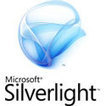
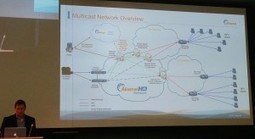

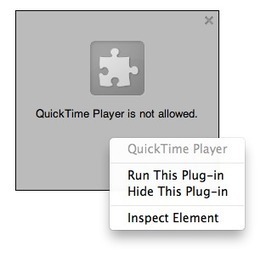
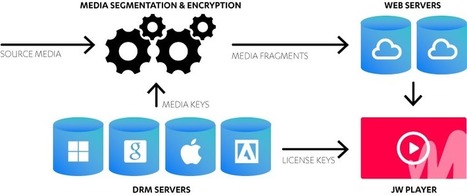

![Les nouvelles frontières de la diffusion OTT : Multicast & P2P [Conférence OVFSquad] | Video Breakthroughs | Scoop.it](https://img.scoop.it/pOujM-JuMKqsNZVy_hdtAjl72eJkfbmt4t8yenImKBVvK0kTmF0xjctABnaLJIm9)











